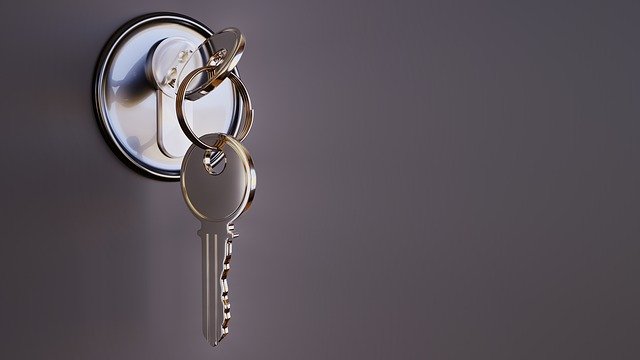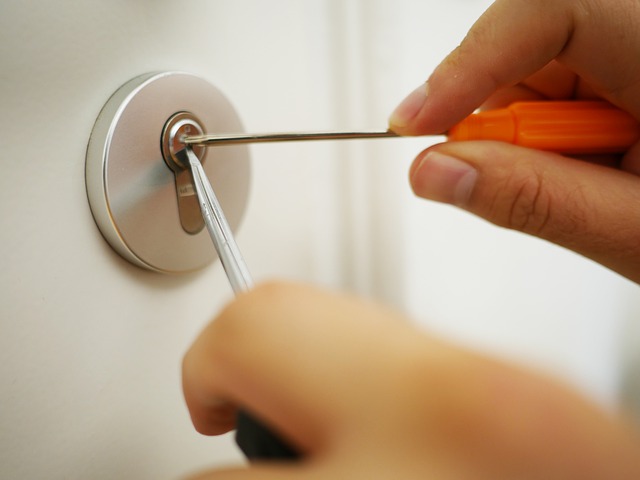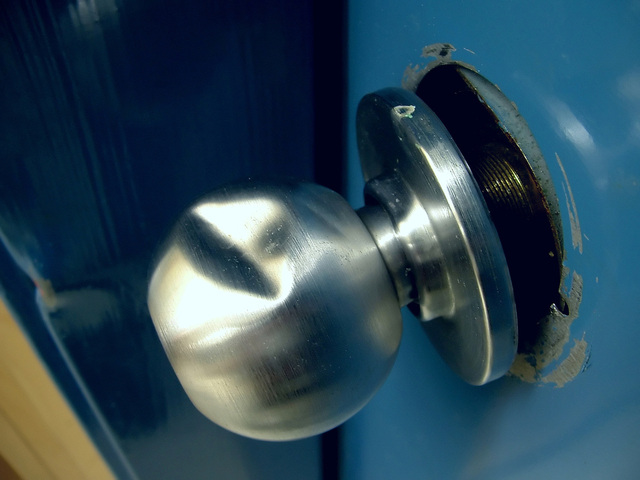Door locks play a crucial part in providing security for your family and your belongings. Just as there are many different types of doors, there are also several types of door locks. Knowing the best type of lock for a specific door is important to ensure the appropriate level of security. Generally, you would want to have the best locking system for your external doors and probably just a simple lock for inside doors and other simple doors like the cabinet or the toilet. Here, we provided you with a guide about the different types of locks to help you decide which one to buy and use for your doors.
- Main Parts of a Door Lock
- Cylinder
- Bolt
- Strike Plate
- Different Types of Door Lock
- Mortice Locks
- Multi-Point Locks
- Night Latch
- Other Useful Door Locks
- Euro Cylinder Locks
- Hand Levers
- Barrel Bolt
- Chain Lock
- Padlock
- Electronic Locks
Best CCTV installers and Aerial engineers near you
Main Parts of a Door Lock
To understand the difference between the different types of locks, it is good to know first the different parts of a lock. A door lock generally has three main parts: the cylinder, the bolt, and the strike plate.
Cylinder
The cylinder is the part of the lock where you insert the key. It is essentially the section that brings the “locking mechanism” to your locking system. Inside the cylinder are several pins that move when the key is inserted. All of the pins inside the cylinder will move only if the key fits the cylinder correctly. The lock will then unlock once the key reaches the last pin, allowing you to move the bolt and open your door. The lock will remain locked if the key does not fit the cylinder correctly.
There are two categories of the cylinder lock. One is the single-cylinder which only has space for a key on one side. The key side is on the external part of the door, while the other side is a knob or a handle that you can lock from the inside of the door. The other one is the double cylinder. Double cylinders do not have a single knob. To lock and open doors using double cylinder locks, you need a key on either side of the door. You can usually find double cylinders in places where you don’t want anyone to be able to lock the door from the inside without a key.
Bolt
Bolts are the part of the door lock that you can move once the key fits within the cylinder. It is the part that moves in and out of the carved-out part of the door frame. There are two common types of bolts: the deadbolt and the spring bolt.
A deadbolt is a locking mechanism that cannot be moved without the correct key. This means that, for a deadbolt, you need to have a key to open the lock before you can move the bolt. On the other hand, spring bolts have a spring within that allows the bolt to retract once it touches the door frame or the lip of the strike plate. The bolts will then automatically extend back to the carved-out part once the door fully closes.
Deadbolt provides more security than the spring bolt, but a deadbolt requires you to always have a key with you. Spring bolts are better than a deadbolt for people who forget their keys most of the time. Spring bolt is ideal for doors that need to be closed but do not need to be locked all of the time.
Strike Plate
The strike plate is the piece of metal attached to the door frame. It holds the door closed once the bolt fully extends to the hole of the strike plate. Strike plates usually come with two holes where it can be screwed to the door frame, making it easy to attach as well as replace when it gets damaged.
Different Types of Door Lock
Choosing the right type of door lock is essential for your security as well as convenience. Additionally, when applying for home insurance or looking for home insurance deals, you will also usually be asked what type of locks you have fitted on your outside doors and windows.
If you have the home insurance industry approved locks fitted on your doors, you could get a discount and may even save a lot of cash on your home insurance premiums. Otherwise, you may find yourself paying a higher premium for your home insurance. Thus, we listed here a guide about the best and most common types of locks that conform to the standard, especially those types of door locks home that can be found in home insurance policies.
- Mortice Locks
- Multi-point Locks
- Rim Automatic Deadlatch/ Night Latch
Mortice Locks
A Mortice Lock is one of the most common door lock types you can see in home insurance policies. Mortice Locks include heavy-duty latches that make it popular for their strength and level of security. Consequently, this type of lock mechanism is commonly used not just in homes but also in residential properties in the UK. A mortice lock requires a mortice to be cut into the edge of the door. This mortice or pocket is where the mortice latch will be fitted to.
A popular mortice lock is the 5 Lever Mortice Deadlock which is commonly fitted to wooden doors. It provides a good level of security as it is locked from both the inside and outside with a key. Thus, this type of lock is most commonly used in external doors, particularly the front door and the back door. Mortice deadlocks are not found on doors like the uPVC (Unplasticized Polyvinyl Chloride) & composite doors.
Aside from the 5 Lever Mortice Deadlock, there is also the 3 Lever Mortice Lock. However, this type of lock is less secure since it has fewer levers. Fewer levers mean that there is a high risk of key duplication. Thus, a 3 Lever Mortice Lock is not approved by the British standard. To be insurance and standard approved, it is best to use the 5 Lever Mortice Deadlock and ensure that it conforms to the current approved British standard.
To identify whether your mortice lock conforms to the standard, the quickest and right way is to look at the faceplate and see if these are engraved: British Standard Kitemark, Number of Lever, and Standard Number. A mortice lock that conforms to the standard is more secure because of its use of hard plates for protection against drilling. If the mortice lock is not standard-approved, the lock is usually fitted with a Nightlatch for added security.
Multi-Point Locks
A multi-point lock is a key operated locking system that is fitted into the body of the door. It has multiple bolts that will engage to the door frame when the door locks. This locking system is commonly operated with a euro cylinder lock. This lock system is approved as it offers a high level of home security due to the lock bolting the door into the frame. It often has three locking points (sometimes 4 or 5) that simultaneously lock when you turn the key.
You can often find this locking system on uPVC and composite doors, especially on entrance doors. It can also be fitted to other doors like timber and aluminium doors. The multi-point lock is often found on the external front door and external back door. Despite its several locking points, only a single cylinder is required for a multi-point lock.
However, you must know how the lock is operated the right way to fully lock the door properly. There is a risk that your key may get broken and stuck inside the lock of your uPVC door, so make sure to use it correctly.
Night Latch or Rim Automatic Deadlatch
Another generally approved lock for insurance is the rim automatic deadlatch or night latch. However, this type of lock is not recommended to be the only lock fitted on your door. For extra measure and to double the security, most providers would prefer the rim automatic latch to be mounted with either the mortice lock or the multi-point lock. Night latch is less secure because it is only mounted on the surface of the front door.
The main difference between a rim lock and a mortice lock is that rim locks are mounted on the surface of the door while mortice locks are mounted within the door edge. Thus, the disadvantage of using rim locks is that it cannot be used and operated alone. Still, rim locks or night latches can be useful in improving security. Night latches can also be easily used as they lock automatically once shutting.
Get Fast-Service Aerial Repairs and CCTV Installations
Other Useful Door Locks
The three previously mentioned lock types are the lock types that are often found in home insurance policies. However, this doesn’t mean that other lock types are not important looking to and should no longer be used. Other products can still be ideal for certain types of doors inside your home. Using other locks can also be good to keep your home safer. Here is a guide about the other categories of locks that can be used to improve the security of your house.
- Euro Cylinder Locks
- Hand Levers
- Barrel Bolt
- Chain Lock
- Padlock
- Electronic Locks
Euro Cylinder Locks
Euro cylinder locks are one of the door lock types that are most commonly found and fitted to modern homes. It is commonly used on doors like uPVC & composite doors. To conform with the standard, euro cylinder locks can be mounted along with either the mortice or multi-point lock.
Euro cylinders can be used in external and internal doors. A cylinder lock may also be used for internal doors in offices, hospitals, schools, etc. Euro cylinder locks can be both single cylinder and double cylinder in design.
Hand Levers
Hand levers are common options for inside doors such as closets or basement doors. Hand levers come with a simple hand lever or a handle accompanied by a single twist knob. A hand lever is a less secure type of lock, but it allows you to easily open the door. This hand lever may be a big help when you’re carrying many items since you can just push the lever or handle down to open the door.
Barrel Bolt
Barrel bolts come with two main parts: the first one is the one that goes on the door’s frame and the other one that goes on the surface of the door. The barrel bolt is essentially a simple lock on the surface that you can slide to lock the door. This type of lock can easily be installed and can help make your home more secure.
Chain Lock
Similar to the barrel bolt, a chain lock is a type of lock that comes with two parts. These parts connect and lock the door to the frame with a chain. Chain locks are common in hotel doors, but many also use them in their house. Using chain locks allow you to slightly open the door to see and greet someone outside of the door from the inside of your house while keeping the door locked. The door can only be unlocked once you close the door back and release the chain, allowing you to open the door all the way.
Padlock
A padlock is one of the simplest types of a door lock. These are not ideal to be used for the front door or back door of your home as it is not secure. People use a padlock in locking doors and common areas that do not require that much of security. You can find padlocks in less secure areas like the storage or a shed or in locking doors that are needed to be closed shut.
Electronic Locks
Electronic locks and digital locks are those locks that allow you to secure and lock your door without the need for a single key to open it. Instead of a key, these locks may be unlocked with the use of a smartphone or a number password. Using digital locks, you may also monitor and know who opens the door at a specific time. Some electronic lock mechanisms can even be operated to assign special privileges or services to family members or other people. These are just some of the many options that may be possible with the use of an electronic lock.
If you’re looking for an emergency locksmith, contact Aerialforce now! We provide same-day emergency response.








